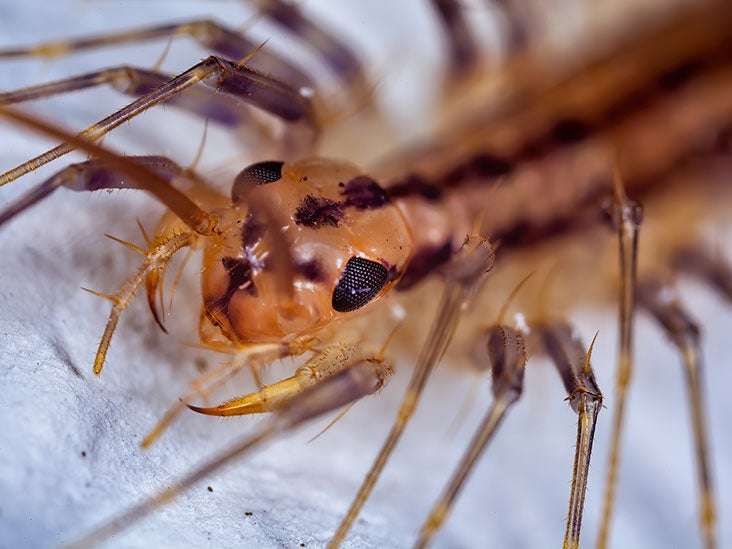Table Of Content

Millipedes protect themselves by secreting a toxic liquid from glands on the side of their body. The liquid causes a corrosive-like effect on the skin, and people may experience burning and redness in the affected area. Doctors can prescribe topical pain relievers and antibiotics if necessary. The house centipede, found in all 50 states, is the most common and responsible for most reported stings. The giant desert centipede, AKA the giant Arizona desert centipede, also abounds in North America and will sting if provoked.
Hawaii Centipede or Scorpion - Take Your Pick - Beat of Hawaii
Hawaii Centipede or Scorpion - Take Your Pick.
Posted: Mon, 29 Aug 2011 07:00:00 GMT [source]
What should you do if you’ve been bitten by a centipede?
Lora brings over 12 years of writing, editing, and digital marketing expertise. She’s worked on thousands of articles related to heating, air conditioning, ventilation, roofing, plumbing, lawn/garden, pest control, insurance, and other general homeownership topics. Sam Wasson graduated from the University of Utah with a degree in Film and Media Arts with an Emphasis in Entertainment Arts and Engineering.
Types of Centipedes
House centipedes feed on small arthropods, including pest insects, so their presence in large numbers may indicate another underlying pest issue. House centipedes (Scutigera coleoptrata) are small arthropods commonly found in homes and other indoor spaces. They are known for their long, segmented bodies and numerous legs, which can make them appear somewhat alarming to those unfamiliar with them. One question that often arises when discussing house centipedes is whether they bite humans or pets. When a centipede bites a person, they inject venom into the skin. The production of the venom takes place in a gland in the forcipule.
Do House Centipedes Bite? Debunking Myths & Facts
This venom helps to paralyze or subdue prey, making it easier for the centipede to feed. Infections can occur as well if you don’t take care of the bite sight. It’s a good idea to clean the area and apply some antibacterial ointments to prevent any issues. The results of getting bit by a house centipede will vary from one person to the next. Human centipedes are capable of completing their entire life cycle indoors, but they can only do that if they have food to hunt and eat!
Why Are There No Spiders in Cobwebs? The Mystery Behind the Messy Corner Creepers
The martini glass method ensures that both the House Centipede and the Bug Humanitarian (yes you were tagged because of your question) will remain safe. If there are medical concerns related to a centipede bite, consult a medical professional. There are six larval instars or molts, and four post-larval instars before the centipedes reach maturity. Females have been known to survive for several years and produce up to 150 young. During the daytime, the centipedes inhabit dark, damp locations in the home and come out at night to forage for prey.
While house centipedes themselves do not pose health risks, their presence indicates that there are other pests around. House centipedes have three life stages — egg, larva, and adult. Female house centipedes prefer the soil, where they can lay up to 35 eggs over a few days. House centipedes have a pair of legs called forcipules right below their mouths, converted to carry out pincer-like actions. They use these pincer-like legs to discharge a venomous sting at their prey or use it for self-defense. The pair of legs at the end of centipedes’ bodies is very long and resembles the antennae in front.
Because they are nocturnal hunters, House Centipedes often startle folks while they are relaxing and watching television. We seriously doubt that people would have much of a chance of handling a House Centipede, because as your email indicates, they are quite fast. Bites normally cause minimal, localized pain, but some individuals may experience severe pain.
Clean drains with vinegar or bleach
However, don’t worry; they tend to be found in small numbers, so infestations are rare. Adult house centipedes have 15 pair of legs with the last pair (on adult females) nearly twice the length of the body, which is one to one and one-half inches in length (Figure 1). This gives the centipede an overall appearance of being from three to four inches in length (including legs and antennae).

What Attracts House Centipedes?
While creepy, centipedes pose little danger to people or a home. When the lights dim and the moon rises, nocturnal-hunting centipedes spring into action. There are more than 8,000 centipede species in the world, appearing on every continent except Antarctica. Therefore, even though these creatures can bite, the chances of them biting through clothes are quite low.
A large house centipede population may indicate an underlying pest problem. Photograph by mourad-harzallah via iNaturalist, used under a CC BY 4.0 license. In cases of anaphylactic shock, clinical signs are likely to improve without long-term consequences if a person receives prompt treatment. Doctors may prescribe an epinephrine auto-injector and suggest avoiding centipedes. If a person does see a doctor, the doctor may suggest using treatments to soothe the pain, itchiness, and swelling of the skin. However, the symptoms tend to resolve on their own within a few hours or a few days at most.
House centipedes are more interested in feasting on other, smaller insects than they are in engaging with humans. The centipede catches them by surprise and quickly injects its venom to incapacitate them. While the centipede’s bite is more than enough to subdue most prey, the toxins make them an apex predator in the insect world. House centipedes are some of the most intelligent insect predators around. You can sometimes observe them taking a more strategic approach to kill sizable opponents.

No comments:
Post a Comment